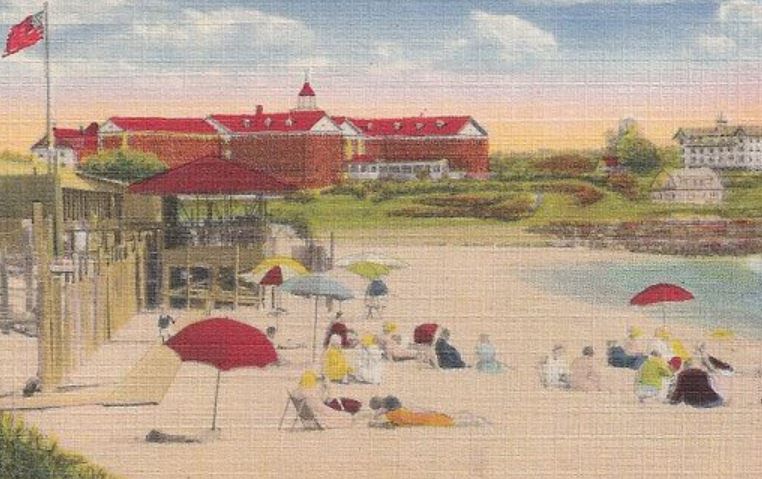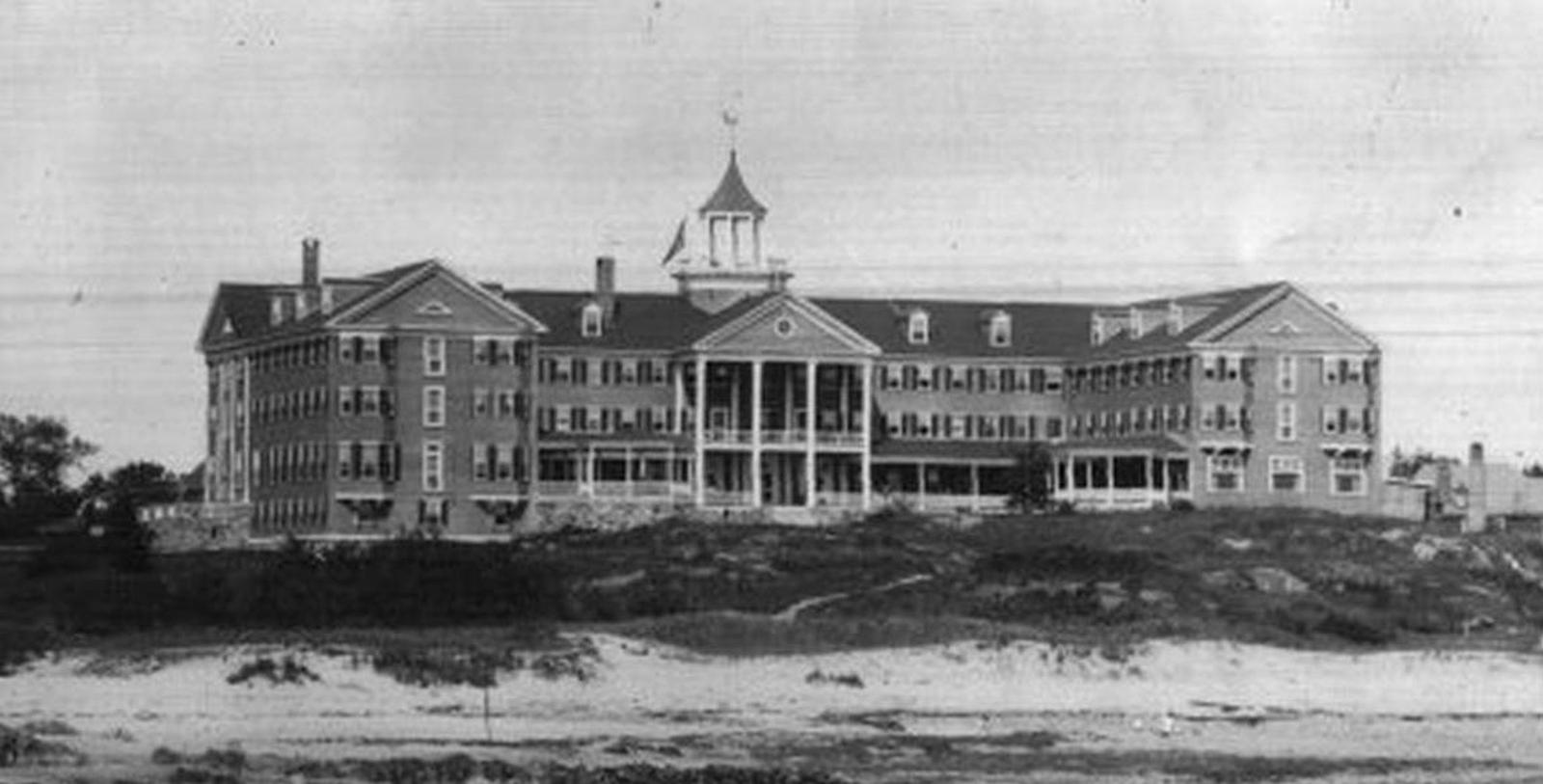Receive for Free - Discover & Explore eNewsletter monthly with advance notice of special offers, packages, and insider savings from 10% - 30% off Best Available Rates at selected hotels.
history
Discover The Colony Hotel, which offers fabulous ocean views and beautiful vintage flair in Kennebunkport, Maine.
The Colony Hotel, a member of Historic Hotels of America since 1999, dates back to 1872.
VIEW TIMELINE
Maintaining a Historic Hotel in Kennebunkport
Watch this local news report on how the Boughton family continue to keep the heritage of The Colony Hotel alive in the present.
WATCH NOWListed in the U.S. National Register of Historic Places as a contributing structure within the Cape Arundel Summer Colony Historic District, The Colony Hotel has been a member of Historic Hotels of America since 1999. Run for generations by the Boughton family, this spectacular historic destination has entertained countless people since the beginning of the 20th century. Indeed, The Colony Hotel originally opened on the eve of World War I as the “Breakwater Court.” Mere months before the conflict erupted, accomplished hotelier Reuel W. Norton commissioned architect Henry Patson Clark to craft The Colony Hotel. (Clark was already a noted architect in the region, as he had designed numerous residential buildings around Cape Arundel.) Norton had fallen in love with the area, determining it would be perfect for a beachside getaway. In fact, the site had previously hosted a grand resort called the “Ocean Bluffs Hotel,” which had tragically burned down during the 1890s. Nevertheless, Norton turned to Clark to make his dream a reality, and he set about constructing a magnificent three-story retreat. Clark used the architectural aesthetics of Colonial Revivalism to craft the building’s appearance, decorating it with beautiful features like white, clapboard siding and expansive porticos. A gorgeous cupola topped the hotel’s pitched roof, while an amazing 300-foot-long porch wrapped around much of the front exterior façade. When work on the structure finally concluded in 1914, it stood as a mesmerizing engineering marvel.
Debuting under the name “Breakwater Court,” Norton’s new hotel quickly established a reputation as being one of New England’s finest summer holiday destinations. Hundreds of people across the region subsequently vacationed at the hotel, especially once the surrounding environs of Cape Arundel became better well-known to Americans living beyond the northeastern United States. The business also remained in the Norton family for many years thereafter, even after Reuel’s death during the early 1920s. But in 1947, the Nortons decided to divest themselves of the hotel and sold it to George Boughton. Hailing from a successful line of hoteliers himself, Boughton had previously purchased the Colony Hotel in Delray Beach a decade prior. Wishing to expand his operations, he agreed to take over the Breakwater Court. Renaming it as “The Colony Hotel” in honor of its Floridian sibling, Boughton proceeded to renovate the entire facility. He specifically expanded its size significantly, adding additional space for more guestrooms, public venues, and sporting complexes across the grounds. The project proved to be wise, as it further augmented the appeal of the building among the numerous tourists that were continuing to flock into the region. Boughton’s descendants still operate The Colony Hotel today, as well as its sister hotel in Florida. (Known as The Colony Hotel & Cabana Club, it is also a member of Historic Hotels of America.) Thanks to their committed stewardship, both locations remain fixtures within their respective communities and offer nothing but the best in luxury comfort.
-
About the Location +
Kennebunkport is a fantastic little community situated along Maine’s southern coastline. Originally founded in 1653, the town has a fascinating history that goes back centuries. Indeed, the first inhabitants of the town were English colonists, who had come north from Massachusetts. Calling it “Cape Porpus,” the small village was filled with dozens of fishermen and sailors. But due to the resistance by the native Abenakis to colonial expansion, the town’s first inhabitants abandoned it for safer places located closer to the Piscataqua River. Nevertheless, the English eventually returned several decades later, reestablishing the town under the new name of “Arundel.” It resumed its pervious status as an important, albeit small local port, with many commercial anglers congregating in neighborhoods like Cape Arundel and Beachwood. In fact, the area’s harbor even attracted the attention of the British during the American Revolutionary War. In 1782, the British specifically sent a brig and a schooner to the town in order to capture the few American vessels moored within it. Unfortunately for the Royal Navy, the British schooner ran aground before completing its objectives. The town’s militia subsequently surged toward the coast, armed with muskets and even a cannon. The militia then proceeded to fire on the British as they tried to flee into the open sea. By the time the fighting had subsided, the Americans had successfully managed to drive the British away at the cost of just one soldier—the militia leader, Captain James Burnham.
Right after the region became a part of the newly created state of Maine, the residents of Arundel decided to rename their community one more time as “Kennebunkport.” The inspiration for the final change came from a communal desire to publicly shift the town’s economy more toward interfacing with the nearby Kennebunk River. They specifically hoped that such an affiliation would make others assume that the settlement was synonymous with trade along the river itself. But the town would never truly leave its connection with the Atlantic. In fact, its relationship with the ocean is what eventually drew the Sea Shore Company to Kennebunkport during the 1870s. Led by four Massachusetts-based businesspeople—Samuel Damon, Richard Hodgden, Charles Goodwin, and John Townsend Trowbridge—the Sea Shore Company desired to highlight Kennebunkport’s rural landscape as a wonderful place to experience a relaxing vacation. Teaming together with a group of other entrepreneurs and enthusiastic locals, the Sea Shore Company proceeded to craft a series of residential lots across town. The men then sponsored the construction of numerous seasonal cottages. Spearheading the project were many different local architects, with the most notable being John Calvin Stevens, William Ralph Emerson, and Henry Patson Clark. The buildings they developed were incredibly gorgeous, reflecting the iconic Shingle-style that New England’s colonial inhabitants had first created years ago.
The Sea Shore Company further attempted to heighten the appeal of Kennebunkport by constructing public facilities across town, like the exciting Kennebunk River Club. They also allured various railroads into the town to provide an easier way for tourists to visit the community. The men even marshalled their resources to build an extravagant seaside resort called the “Ocean Bluff Hotel” to service any potential guest overflow. The presence of the cottages stirred many affluent families from throughout New England to purchase them, which gradually turned Kennebunkport into a leading American resort destination. In fact, the community soon had several high-profile residents, including author Booth Tarkington, Margaret Deland, and painter Prosper L. Senat. Over time, many more families arrived and built their own summer homes across Kennebunkport, establishing secluded neighborhoods in places like Cape Arundel. Those summer colonies iquickly solidified Kennebunkport’s identity as an outstanding vacation hotspot—a status it has since preserved well into the present. Perhaps the great sign of Kennebunkport’s continued prestige is the presence of the Bush family’s private vacation complex called “Walker’s Point Estate.” Also known informally as the “Bush Compound,” it has been the home of former U.S. Presidents George H.W. Bush and George W. Bush. (President George W. Bush still frequents the facility today, which he fondly used as his “Summer White House” while serving in the Oval Office.)
-
About the Architecture +
The Colony Hotel stands today as a wonderful interpretation of Colonial Revival architecture. Colonial Revival architecture itself is perhaps the most widely used building form in the entire United States today. It reached its zenith at the height of the Gilded Age, where countless Americans turned to the aesthetic to celebrate what they feared was America’s disappearing past. The movement came about in the aftermath of the Centennial International Exhibition of 1876, in which people from across the country traveled to Philadelphia, Pennsylvania, to commemorate the American Revolution. Many of the exhibitors chose to display cultural representations of 18th-century America, encouraging millions of people across the country to preserve the nation’s history. Architects were among those inspired, who looked to revitalize the design principles of colonial English and Dutch homes. This gradually gave way to a larger embrace of Georgian and Federal-style architecture, which focused exclusively on the country’s formative years. As such, structures built in the style of Colonial Revival architecture featured such components as pilasters, brickwork, and modest, double-hung windows. Symmetrical designs defined Colonial Revival-style façades, anchored by a central, pedimented front door and simplistic portico. Gable roofs typically topped the buildings, although hipped and gambrel forms were used, as well. This form remained immensely popular for years until largely petering out in the late 20th century. Nevertheless, architects today still rely upon Colonial Revival architecture, using the form to construct all kinds of residential buildings and commercial complexes. Many buildings constructed with Colonial Revival-style architecture are even identified as historical landmarks at the state level, and the U.S. Department of the Interior has even listed a few of them in the U.S. National Register of Historic Places.































